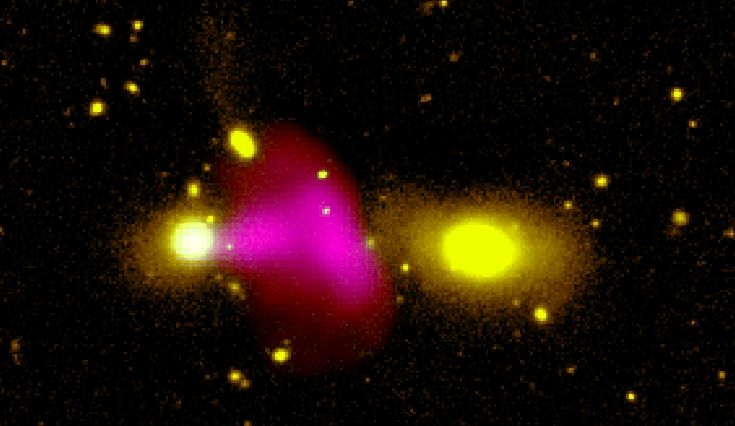Astronomers discover unique black hole spewing fiery jet at another galaxy

Astronomers have discovered a unique black hole, hosted by a galaxy around one billion light years away from Earth, spewing a fiery jet at a neighbouring galaxy.
The black hole located within galaxy RAD12 appears to be ejecting the jet only towards its merging companion galaxy, named RAD12-B. Usually, jets are ejected in pairs, moving in opposite directions at relativistic speeds, but, in this case, only one jet is seen coming from RAD12, which remains a puzzle to astronomers.
The mysterious nature of RAD12 was previously observed in 2013 using optical data from the Sloan Digitised Sky Survey (SDSS) and radio data from the Very Large Array (FIRST survey).
While a conical stem of young plasma is seen being ejected from the centre and reaches far beyond the visible stars of RAD12, observations with the Giant Meterwave Radio Telescope (GMRT) in India revealed that the fainter and older plasma extends far beyond the central conical stem and flares out like the cap of a mushroom (seen in red in the tricolour image).
Located in Pune, India, GMRT is a powerful instrument for investigating a variety of radio astrophysical problems ranging from the nearby Solar system to the edge of the observable Universe.
"We are excited to have spotted a rare system that helps us understand radio jet feedback of supermassive black holes on star formation of galaxies during mergers. Observations with the GMRT and data from various other telescopes such as the MeerKAT radio telescope strongly suggest that the radio jet in RAD12 is colliding with the companion galaxy," says research lead Dr Ananda Hota.
For the unversed, the South African MeerKAT radio telescope, situated 90 km outside the small Northern Cape town of Carnarvon, is an array of 64 interlinked radio dishes. It is built and run by the South African Radio Astronomy Observatory (SARAO).
The findings are published in the journal Monthly Notices of the Royal Astronomical Society (Letters).










